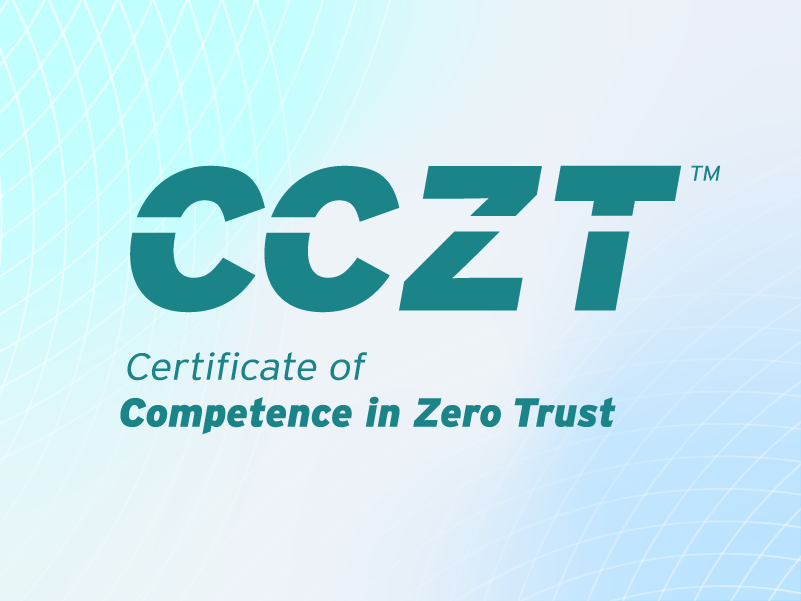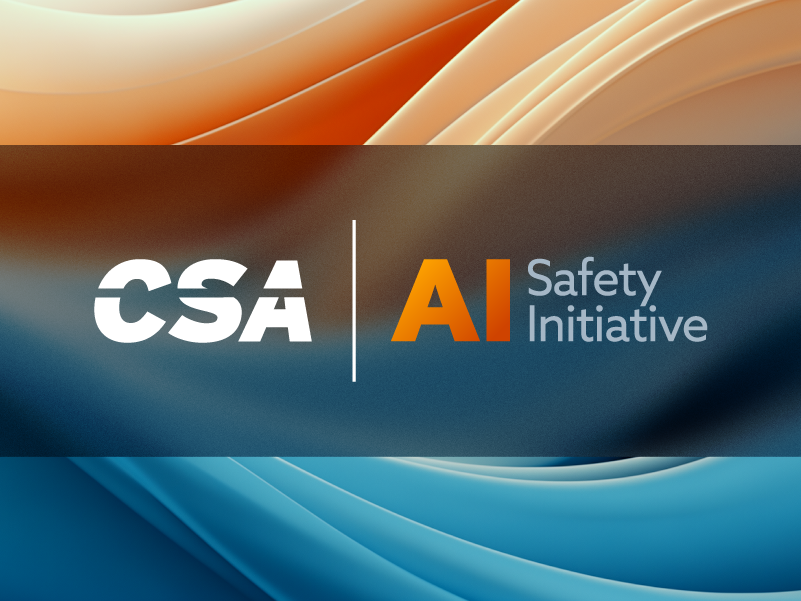Agentic AI Identity Management Approach
Published 03/11/2025
Written by Ken Huang, CEO of DistributedApps.ai, CSA Fellow, Co-Chair of CSA AI Safety Working Groups, and CEO of DistributedApps.ai.
Traditional identity management systems like OAuth and SAML were designed for human users and/or static machine identities. However, they fall short in the dynamic world of AI agents. These systems provide coarse-grained access control mechanisms that cannot adapt to the ephemeral and evolving nature of AI-driven automation.
AI agents can initially assume human identities but must later switch to non-human identities for task execution. This includes performing operations such as database queries, API calls using API keys, and other system interactions. The challenge is ensuring secure and dynamic authentication and authorization while maintaining accountability and enforcing security policies.
Limitations of OAuth and SAML for AI Agents
OAuth (Open Authorization) and SAML (Security Assertion Markup Language) have long been foundational frameworks for authentication and authorization across digital systems. While these protocols effectively manage human user identities, their application to AI agents presents several challenges.
OAuth is widely used for delegated access, enabling users to grant permissions to third-party applications without sharing their credentials. However, OAuth’s token-based authorization model is primarily designed for static permissions assigned to human users and applications with well-defined scopes. AI agents require more granular and adaptive access control mechanisms, as their permissions may need to change dynamically based on contextual factors such as risk levels, mission objectives, or real-time data analysis.
SAML, on the other hand, provides a standardized method for exchanging authentication and authorization data between identity providers and service providers. Its reliance on XML-based assertions and static session-based authentication makes it less suited for AI agents, which may need continuous authentication and real-time privilege adjustments. Additionally, SAML’s heavy reliance on user attributes does not align well with AI-driven interactions, where contextual and behavioral factors should influence access decisions.
Another critical limitation of both OAuth and SAML is their trust-based model, which assumes that once an entity is authenticated, it remains trustworthy throughout the session. AI agents introduce complexities such as adversarial attacks, evolving intent, and changing operational contexts, requiring continuous validation rather than one-time authentication. These shortcomings necessitate a move towards dynamic identity management solutions better suited to AI-driven environments.
The Need for Ephemeral Authentication
Given the transient nature of AI agents, traditional identity mechanisms based on persistent credentials are inadequate. Instead, an ephemeral authentication approach is required—one that generates short-lived, context-aware identities tailored to an agent’s current task and operational scope. This ensures that AI agents do not retain broad or persistent privileges, minimizing security risks.
This approach aligns with the principle of least privilege, where AI agents receive only the minimum necessary permissions for their current operation. For example, an AI agent processing medical records would receive credentials valid only for accessing specific patient records needed for its current analysis task, automatically expiring after completion.
The dynamic nature of ephemeral authentication creates improved audit trails and accountability. Each authentication token is linked to specific tasks and contains metadata about the requesting system, purpose, and allowed operations. This granular tracking simplifies forensic analysis and creates clear relationships between permissions and business purposes. When security incidents occur, investigators can easily trace the exact scope and context of compromised credentials.
This authentication model also enables adaptive security postures where access scope can adjust based on real-time risk assessments and system state. During elevated threat conditions, generated credentials might have shorter lifespans or require additional validation steps. This flexibility allows security policies to evolve without requiring massive credential rotation efforts, making zero-trust architectures more practical to implement.
From an operational perspective, ephemeral authentication eliminates many traditional pain points around credential management. Organizations no longer need complex rotation schedules or worry about leaked long-term credentials. The system naturally aligns with modern cloud-native architectures where services are constantly scaling up and down. Major cloud providers have already embraced similar concepts through services like AWS STS temporary credentials and GCP service account impersonation.
The implementation of ephemeral authentication requires robust infrastructure including high-performance credential generation, secure metadata embedding, and efficient revocation capabilities. While this adds some complexity, the security benefits generally outweigh the operational overhead. The system must integrate with existing task scheduling, access control frameworks, and audit logging platforms to provide comprehensive security coverage.
Looking ahead, ephemeral authentication will likely evolve alongside emerging technologies like quantum-resistant algorithms and zero-knowledge proofs. The development of industry standards and best practices will be crucial for widespread adoption. Organizations implementing Agentic AI systems should consider ephemeral authentication as a foundational security component rather than an optional feature.
The Role of Dynamic Identity Management in AI Agents
Dynamic identity management is an emerging approach that accommodates the evolving nature of AI agents by enabling adaptive authentication, continuous authorization, and real-time access control adjustments. Unlike traditional identity management models that assign fixed roles and permissions, dynamic identity management relies on continuous monitoring and contextual evaluation to determine an AI agent’s access rights.
A core component of dynamic identity management is identity federation, where AI agents can operate across multiple systems while maintaining consistent security policies. Identity federation enables AI-driven entities to authenticate seamlessly across different domains while ensuring compliance with security policies. This is particularly useful in multi-cloud and hybrid environments where AI agents interact with diverse services, datasets, and computing infrastructures.
Another critical aspect of dynamic identity management is behavior-based authentication. Instead of relying solely on static credentials or predefined roles, AI agents can be authenticated based on their real-time behavior, previous interactions, and risk assessment. This approach enhances security by detecting anomalies that may indicate compromised or malicious AI activity. Additionally, dynamic identity management allows for policy-driven adjustments, where an AI agent’s permissions can be altered based on contextual information such as location, device security posture, and real-time threat intelligence.
By integrating dynamic identity management, organizations can enhance the security, efficiency, and adaptability of AI-driven systems while mitigating the risks associated with static access controls.
Beyond RBAC: Fine-Grained Access Controls
Role-Based Access Control (RBAC) has been a widely used model for managing access permissions within enterprises. RBAC assigns roles to users, and each role is associated with a predefined set of permissions. However, AI agents operating in complex environments require more nuanced access controls that go beyond traditional RBAC.
Fine-grained access control mechanisms, such as Attribute-Based Access Control (ABAC) and Policy-Based Access Control (PBAC), provide the flexibility needed for AI-driven interactions. ABAC grants access based on attributes such as user roles, device security posture, Agent’s attributes, data labeling, Agent’s tool set, and environmental conditions, enabling more dynamic and context-aware authorization decisions. PBAC, on the other hand, defines policies that specify conditions under which access is granted, allowing for real-time adaptability to changing security contexts.
Another approach that enhances fine-grained access control is Just-In-Time (JIT) access management. JIT access enables AI agents to request temporary permissions only when needed, reducing the risk of excessive privileges. This model ensures that access rights are dynamically provisioned and revoked based on real-time operational needs, thereby minimizing the attack surface.
Integrating fine-grained access control mechanisms into AI identity management frameworks allows organizations to implement more precise security policies that align with AI agents' evolving roles and responsibilities.
Need for a Dynamic Framework
A static approach to identity management is inadequate for AI-driven ecosystems. The need for a dynamic framework arises from the evolving nature of AI agents, their interactions with multiple systems, and the security challenges associated with autonomous decision-making. A dynamic framework ensures that AI agents operate within well-defined security boundaries while allowing for real-time adjustments based on operational requirements.
Key components of a dynamic identity management framework include:
- Context-Aware Authentication: AI agents should be authenticated based on real-time factors such as device security posture, location, and behavioral analytics.
- Continuous Authorization: Instead of relying on one-time authentication, access privileges should be continuously evaluated and adjusted based on changing conditions.
- Adaptive Security Policies: AI-driven systems should enforce policies that dynamically adjust access permissions based on risk assessments, mission objectives, and threat intelligence.
- Trust Scoring Mechanisms: AI agents should be assigned dynamic trust scores based on their historical behavior, anomaly detection, and security posture. Trust scores should influence access decisions, allowing high-trust agents to operate with broader privileges while restricting potentially compromised entities.
Implementing a dynamic framework allows organizations to balance security and operational efficiency, ensuring that AI agents remain both productive and secure in evolving digital environments.
Zero Trust Approach to Agentic AI
Zero Trust principles require continuous verification of identity, strict least privilege access, and segmentation of network resources. Applying Zero Trust to AI agents involves enforcing the following practices:
- Continuous Verification: AI agents must undergo real-time authentication and authorization checks, ensuring that only legitimate entities gain access to resources.
- Least Privilege Access: AI agents should be granted only the minimum access required to perform their tasks, reducing the risk of privilege escalation.
- Micro-Segmentation: AI-driven environments should be segmented to limit lateral movement, ensuring that compromised agents cannot access unrelated resources.
- Anomaly Detection and Response: AI behavior should be continuously monitored for deviations from expected patterns, triggering automated responses when anomalies are detected.
By incorporating Zero Trust principles, organizations can enhance the security of AI-driven systems while mitigating risks associated with adversarial attacks and unauthorized access.
Final Thoughts
As AI agents become more prevalent, rethinking identity and access management is imperative. The traditional models of identity are not designed to handle the fluid and evolving nature of AI-driven automation. By adopting ephemeral authentication, fine-grained access control, and Zero Trust principles, we can build a robust identity management approach that secures AI agents while enabling their full potential.
About the Author
Ken Huang is a prolific author and renowned expert in AI and Web3, with numerous published books spanning AI and Web3 business and technical guides and cutting-edge research. As Co-Chair of the AI Safety Working Groups at the Cloud Security Alliance, and Co-Chair of AI STR Working Group at World Digital Technology Academy under UN Framework, he's at the forefront of shaping AI governance and security standards.
Huang also serves as CEO and Chief AI Officer(CAIO) of DistributedApps.ai, specializing in Generative AI related training and consulting. His expertise is further showcased in his role as a core contributor to OWASP's Top 10 Risks for LLM Applications and his active involvement in the NIST Generative AI Public Working Group.
Key Books
- “Agentic AI: Theories and Practices”, to be published by Springer, July 2025
- "Beyond AI: ChatGPT, Web3, and the Business Landscape of Tomorrow" (Springer, 2023) - Strategic insights on AI and Web3's business impact.
- "Generative AI Security: Theories and Practices" (Springer, 2024) - A comprehensive guide on securing generative AI systems
- "Practical Guide for AI Engineers" (Volumes 1 and 2 by DistributedApps.ai, 2024) - Essential resources for AI and ML Engineers
- "The Handbook for Chief AI Officers: Leading the AI Revolution in Business" (DistributedApps.ai, 2024) - Practical guide for CAIO in small or big organizations.
- "Web3: Blockchain, the New Economy, and the Self-Sovereign Internet" (Cambridge University Press, 2024) - Examining the convergence of AI, blockchain, IoT, and emerging technologies
His co-authored book on "Blockchain and Web3: Building the Cryptocurrency, Privacy, and Security Foundations of the Metaverse" (Wiley, 2023) has been recognized as a must-read by TechTarget in both 2023 and 2024.
A globally sought-after speaker, Ken has presented at prestigious events including Davos WEF, ACM, IEEE, CSA AI Summit, IEEE, ACM, Depository Trust & Clearing Corporation, and World Bank conferences.
Recently, Ken Huang became a member of OpenAI Forum to help advance its mission to foster collaboration and discussion among domain experts and students regarding the development and implications of AI.
Explore Ken's books on Amazon.
Related Resources



Unlock Cloud Security Insights
Subscribe to our newsletter for the latest expert trends and updates
Related Articles:
Agentic AI Security: New Dynamics, Trusted Foundations
Published: 12/18/2025
AI Security Governance: Your Maturity Multiplier
Published: 12/18/2025


.png)
.jpeg)

.jpeg)
.jpeg)